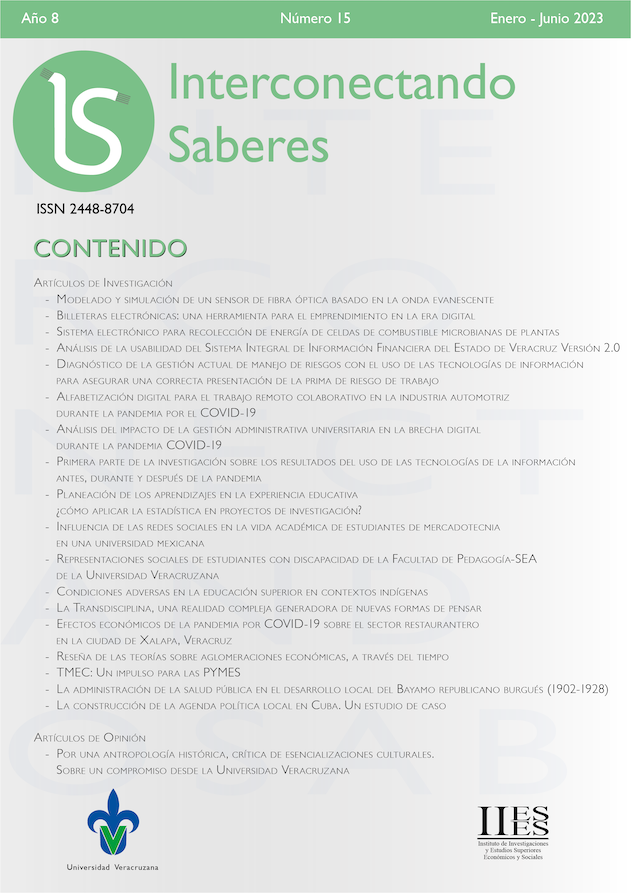Abstract
With the pass of time, new alternatives for the production of energy have emerged, one of them is the microbial fuel cell, through which the residual energy of microorganisms is harvested. However, this method presents deficiencies in its application due to the rapid use of the substrate by microbes to generate electrical energy. This paper proposes the implementation of plant microbial fuel cells, which add microorganisms to the energy generation system, and through the photosynthesis process, promote a beneficial interaction for the substrate, allowing it to conserve its properties, necessary for the production of energy. To store the electricity harvested from the plant microbial fuel cell, it is necessary to know the behavior of the voltage produced, to develop the most efficient method of energy harvesting by designing a smaller, less intrusive device and giving the possibility for a less invasive prototype for the plant.
References
Chiranjeevi, P., Yeruva, D. K., Kumar, A. K., Mohan, S. V., & Varjani, S. (2019). Plant-microbial fuel cell technology. In Microbial Electrochemical Technology (pp. 549–564). Elsevier.
Herber, A., Hanisch, A., Gnoerrlich, T., Laqua, D., & Husar, P. (2012). Design of power management in Energy Harvesting Devices. Biomedizinische Technik. Biomedical Engineering, 57(SI-1 Track-S).
Maddalwar, S., Kumar Nayak, K., Kumar, M., & Singh, L. (2021). Plant microbial fuel cell: Opportunities, challenges, and prospects. Bioresource Technology, 341, 125772.
Moqsud, M. A., Yoshitake, J., Bushra, Q. S., Hyodo, M., Omine, K., & Strik, D. (2015). Compost in plant microbial fuel cell for bioelectricity generation. Waste Management, 36, 63–69.
Sebestyén, V. (2021). Renewable and Sustainable Energy Reviews: Environmental impact networks of renewable energy power plants. Renewable & Sustainable Energy Rev., 151(111626), 111626.
Timmers, R. A., Strik, D. P. B. T. B., Hamelers, H. V. M., & Buisman, C. J. N. (2010). Long-term performance of a plant microbial fuel cell with Spartina anglica. Applied Microbiology and Biotechnology, 86(3), 973–981.

This work is licensed under a Creative Commons Attribution-NonCommercial-NoDerivatives 4.0 International License.
Copyright (c) 2023 Miguel Lara Castro, Sebastián Lorenzana Muñoz, Ana María Carmona Villanueva, Ana Carem Bonilla Hernández

